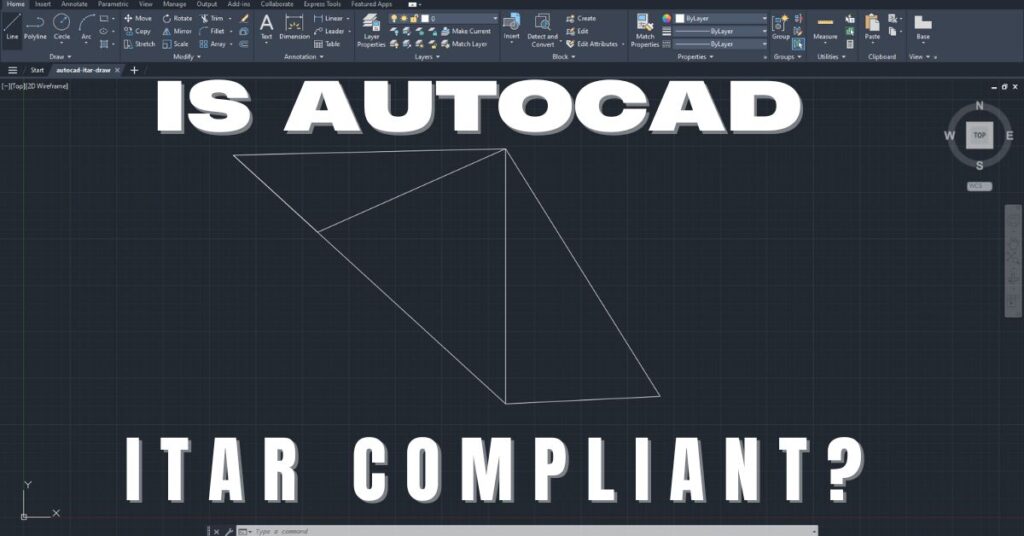Everything Managers Need to Know About CMMC 2.0
Cybersecurity incidences continue impacting consumers and entities worldwide. The impact of a single incident can be profound. Although people often focus on their personally identifiable information (PII) being stolen and the impact this would have on their life, if specific information related to the Department of Defense (DoD) got into the wrong hands, the impact on all of us would be considerable. The cybersecurity requirements for the DoD are pretty elaborate since the security measures must address the information held by DoD and the Defense Industrial Base (DIB).
Therefore, CMMC (Cybersecurity Model Maturity Certification) framework was released to help DoD contractors protect the Controlled Unclassified Information (CUI) and Federal Contract Information (FCI). After the DoD established compelling evidence that the contractors didn’t have sufficient compliance with the pre-existing cybersecurity self-certifications because of the rise and sophistication of cyber threats, it announced CMMC 2.0 on 4th November 2021. Are you a manager dealing with CUI or working in the DIB? Read on to find all you need to understand about CMMC 2.0.
Streamlining CUI Security with CMMC 2.0
CMMC 2.0 is overseen by the OUSD(A&S). You can find its information on various resources, including the OUSD(A&S) website and the Department of Defense news brief. From the available information, there are two primary considerations for the contractors in the DIB:
- How do the core components of CMMC 2.0 differ from those of the previous version?
- How assessment and implementation requirements procedures will differ
We’ll address these primary considerations, comparatively looking at the previous version of CMMC to inform the mapping or implementation procedure your corporation needs to initiate.
CMMC 2.0 Core Components, Assessment, and Implementation
Previously, non-federal organizations followed the NIST 800-171 model. It specified 110 controls to be implemented and documented by a CUI System Security Plan (SSP). CUI SSP detailed how people, IT systems, and physical facilities protected the Controlled Unclassified Information.
CMMC 2.0 also draws heavily from NIST 800-171. Unlike CMMC 1.0, which comprised five levels, CMMC 2.0 has three levels; foundational, advanced, and expert. In the foundational level (level 1), the DoD contractors must comply with the seventeen “basic cyber hygiene” NIST SP 800-171 security measures. In the advanced level (level 2), the contractor must adhere to all 110 security controls of the NIST 800-171.
Though still under finalization by the Department of Defense, it is expected that besides following the 110 security controls from NIST 800-171, the expert level (level 3) will also incorporate the 35 enhanced security measures under NIST 800-172. There are three types of assessments that your company may undergo, based on the level of your CMMC certification; Self, Third Party, or government assessment.
Self-Assessment
DoD views the foundational level as an opportunity for engaging the contractor in strengthening and developing how they approach cybersecurity. Since this level doesn’t involve critical or sensitive national security information, the Department of Defense fully intends to use the foundational level to give a chance to contractors to assess their cybersecurity and start adopting practices that will prevent cyber-attacks. The case is similar for a section of level 2 programs that don’t involve critical information to national security.
With CMMC 2.0, you are required to perform a self-assessment annually. As the manager, you are also supposed to affirm your company meets all the requirements of your CMMC 2.0 certification level.
Third-Party Assessments
After implementing CMMC 2.0, you’ll be required to be assessed by a third party. According to David McKeown, Deputy DoD CIO, it looks like almost all corporations are clear defense contractors or have some critical industry tie. This means that pretty much all DOD contractors will end up handling critical Controlled Unclassified Information. Therefore, all the 80000 contractors will need a CMMC 2.0 Level 2 assessment. This includes third party-assessment.
McKeown also said that the Department of defense is working closely with CMMC Accreditation Body that accredits all CMMC Assessors and Instructors Certification Organizations (CAICO) and CMMC third-party assessment organizations (C3PAOs) to finish the assessment ecosystem.
However, the responsibility to obtain the necessary assessment and certification falls under your corporation, including the planning and coordinating of the CMMC assessment. The C3PAO will later send the assessment report to the Department of Defense upon completing the CMMC assessment.
Government Assessments
The DoD intends government officials to assess the CMMC 2.0 Expert Level (level 3) cybersecurity requirements. However, the assessment requirements are still under development.
If you identify any weakness in the 110 security controls in your corporation, CMMC 2.0 requires you to address it in a comprehensive POA&M (the Plan of Action & Milestones), specifying all the deficiencies and a timeline for remediation. Based on how effective the CUI SSP is, you must calculate a score using the Department of Defense Assessment Methodology.
Every entity score can then be tracked in the Federal SPRS (Supplier Performance Risk System) database alongside entity-specific information like C-suite attestation. The government contracting officer validates whether the SPRS scores were provided as part of the competition process for the DoD contract. The scores are generally needed whether you are a prime contractor or a subcontractor. Since December 2017, meeting the NIST 800-171 has been a requirement in most government contracts.
Management Team Considerations
Assuming that being a subcontractor or a prime contractor in the DIB is a part of your corporation’s business strategy, as a manager, you should address the following;
Conducting Business with The Department of Defense
- Plan for CMMC and Cybersecurity. Ensure that you give due consideration to the indirect costs that your entity might incur in completing proposals according to the guidelines of the IAW Defense Contract Management Agency
- Identify the near-term or pending services or products your corporation might need to contract with the DoD.
- Make a summary of the products and/or services you presently supply to the Department of Defense.
Understanding the Compliance Requirements
- Has the corporation identified Controlled Unclassified Information referenced in your contract and DD Form 254; the Contract Security Classification Specification.
- Consider the status of your company’s CUI SSP. Are the deficiencies & corrective measures under the Plan of Actions & Milestones achieved on a timely basis?
- Identify the stakeholders in cybersecurity external to IT like human resources, one C-suite leader, facility security, and contracting officers.
- Ask your government contracting officer whether there are new cybersecurity clauses under consideration for contract modification or inserted in option-year DoD contracts.
Take the Required Steps to Attain the Business Goals
- Regularly monitor your organization’s compliance with DoD contractual requirements like NIST 800-171.
- Whenever new terms and conditions arise, review them to understand the scope of the compliance program.
- Review your resource requirements to meet your objectives
- Conduct annual reviews of the enterprise processes, policies, plans, and procedures implementing the CUI security. This helps you coordinate the expanding Controlled Unclassified Information protection efforts between various stakeholders and departments.
Can you take other proactive measures to improve the probability of succeeding in your bid process? Then you should consider them.
The responsibility of ensuring the cybersecurity within a corporation having several clauses inserted in their contracts solely lies under the management team. As a manager, you hire the staff and provide them with the necessary information on what cybersecurity measures they should help the corporation attain. Therefore, you must understand the measures like CMMC 2.0 if you work under the DIB. Is the task overwhelming to you? You can enlist the help of MSSPs and MSPs. Fortunately, we at Cleared Systems are ready to help. Reach out to us today for more information.
Share in Social Media
See More Case Studies

Securing Defense Contracts: A DFARS 252.204-7012 Compliance Case Study
Discover how Cleared Systems helped a Federal Contractor successfully achieve DFARS 252.204-7012 compliance by strengthening its cybersecurity posture, giving it a competitive edge when bidding for DoD Contracts.

What is GCC High? For ITAR & CMMC 2.0
Microsoft 365 Government Community Cloud (GCC) High is a specialized cloud solution tailored for U.S. federal, state, local, tribal, and territorial government organizations, as well as for contractors who hold or process data subject to specific security regulations. In this article, we will explore the features, benefits, and differences between Microsoft 365 GCC High and other Office 365 offerings.

Is AutoCAD ITAR Compliant? A Comprehensive Guide for Defense Manufacturers
Defense contractors and manufacturers working with sensitive military technologies face a critical question when selecting computer-aided design software: Is AutoCAD ITAR compliant? This question becomes

How to Get Help in Windows: Guide to Security and Compliance Support
In today’s digital landscape, ensuring your computer systems are secure and compliant with industry regulations is essential for both businesses and individuals. Windows, as one

Microsoft Copilot for GCC High: Enhancing Security and Compliance
In today’s fast-evolving digital landscape, organizations that handle sensitive data, particularly those in government sectors or defense contractors, face growing pressure to maintain strict security
Partner with Us for Compliance & Protection
We’re happy to answer any questions you may have and help you determine which of our services best fit your needs.
Your benefits:
- Client-oriented
- Security
- Compliance
- Peace of mind
- Efficiency
- Trust
What happens next?
Schedule an initial meeting
Arrange a discovery and assessment call
Tailor a proposal and solution
